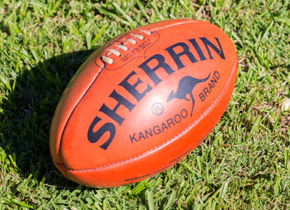Media releases
New research will help sports plan new programs
Posted: Monday 28 November 2016
New research on sport participation rates will enable associations and clubs to develop new programs to attract more participants, particularly among females.
Associate Professor Rochelle Eime from Federation University Australia was a key member of a joint project that discovered men and boys participate in organised sport at twice the rate of women and girls across 11 sports.
Membership databases from 2015 in the sports of AFL, basketball, bowls, cricket, football (soccer), golf, gymnastics, hockey, netball, sailing and tennis player were analysed to gain insights into sport participation throughout Victoria.
Across the 11 sports, 20.4 per cent of boys and men participated across the 11 sports compared with 10.5 per cent of women and girls. The gap widened in the five-14 year age bracket where 30 per cent more males participated (80 per cent to 50 per cent) than females.
The participation rates in the Metropolitan Growth Areas were the lowest in the state for 5-19 year olds with girls in these areas having significantly lower participation than girls elsewhere in the state.
The research, undertaken by Associate Professor Rochelle Eime, Dr Jack Harvey and Ms Melanie Charity, included collaboration between VicHealth, Sport and Recreation Victoria, Federation University Australia and Victoria University and found a range of participation trends across the eleven sports including:
- Overall, sport participation rates peaked among those aged five to 14 years, with more than two-thirds of Victorians within this age group (67 per cent) participating in the eleven sports
- From the age of 15, participation rates drop significantly: participation rates among the 15-19 year age group is less than half of that among children aged 5 to 14 (29 per cent compared with 67 per cent).
- By age 30 participation rates were below eight per cent for all sports in total.
- For most ages, participation rates were higher in regional areas than metropolitan areas with the largest difference in participation rates in the five-14 year-old group where there was 80 per cent participation in regional areas compared with 45 per cent in metropolitan growth areas.
- Participation rates for children, 14 years and under, in the metropolitan growth areas are much less than Melbourne’s established areas.
Associate Professor Rochelle Eime said the research provided state sporting associations with unique insights on participation trends and influences.
“This research is unique in that it captures sport club participants across the lifespan from four-100 years in one integrated sports database,” Associate Professor Eime said.
“While participation rates were high for younger children, rates declined considerably during adolescence which could suggest that we need to explore the role of other types of sport programs including social program, in parallel with the competition model which is offered through clubs.
“That only half the amount of women and girls take part in organised sport compared to men and women also suggests that clubs that offer social and flexible programs for all skill levels in safe and welcoming environments may be able to better attract and retain female players.”
The report is available at: www.sportandrecreationspatial.com.au
| Contact | Matthew Freeman Senior Advisor, Media and Government Relations 03 5327 9510; 0408 519 674 m.freeman@federation.edu.au |
|---|